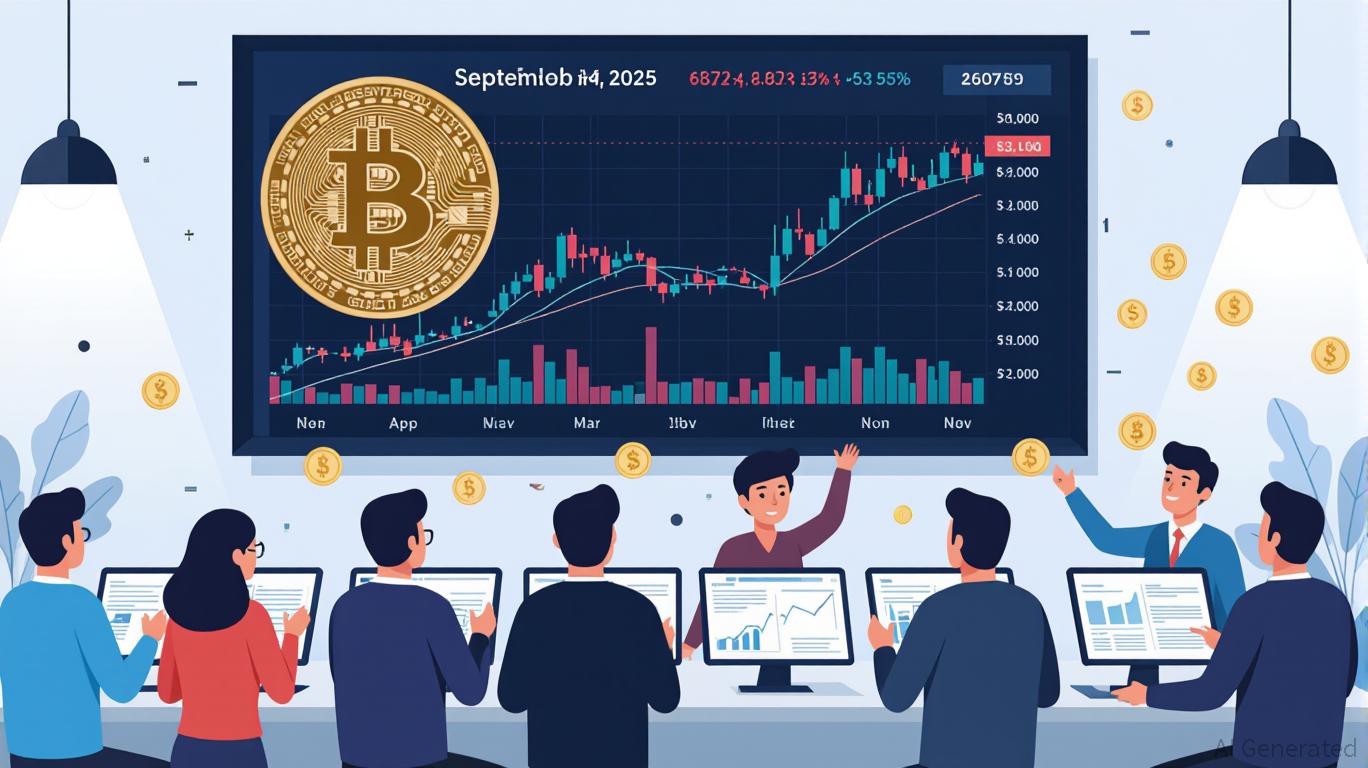U.S. Debt Fluctuations Surge Amid AI-Driven Borrowing Growth and Fed Faces Fiscal Uncertainty
- U.S. Debt Volatility Index hits one-month high in November, reflecting market anxiety amid government shutdown resolution and fiscal risks. - AI infrastructure debt surges 112% to $25B in 2025, driven by tech giants’ $75B in bonds for GPU/cloud projects, raising overleveraging concerns. - Fed faces mixed signals: October job losses push December rate cut odds to 68%, while gold/silver rise 2-3% as investors seek safe havens amid fiscal/geopolitical risks. - Delayed economic data from shutdown complicates
The U.S. Debt Volatility Index reached its highest point in a month at the start of November, highlighting ongoing market unease even after the government averted a shutdown. Although Congress agreed on a funding deal to keep federal agencies running, investors remained cautious about larger fiscal threats, such as the rapid increase in AI infrastructure debt and weak economic indicators that could postpone interest rate reductions by the Federal Reserve.

The shutdown, which persisted for more than a month, interrupted the release of vital economic statistics, leaving both policymakers and investors without a clear picture of economic conditions.
At the same time, the AI sector’s rapid growth is driving a sharp increase in data center borrowing, which has soared 112% year-over-year to $25 billion projected for 2025. This growth is fueled by large-scale projects needing advanced GPUs and cloud systems, with leading tech companies like
The Federal Reserve’s policy outlook remains uncertain due to conflicting economic signals.
Gold advanced 2% to $4,079.78 per ounce, while silver gained nearly 3%, as investors sought safety amid fiscal and geopolitical worries. Ole Hansen from Saxo Bank observed that higher bond yields reflected “fiscal concerns” rather than inflation, a pattern that has benefited precious metals.
Looking forward, markets remain divided over the dollar’s strength and the Fed’s next moves. Although reopening the government will restore the flow of economic data, delays in October’s jobs and inflation reports may hinder precise policy adjustments. Analysts caution that the combination of debt-fueled AI infrastructure expansion and shaky fiscal fundamentals could keep volatility elevated. For now, the rise in the Debt Volatility Index signals a market still wrestling with uncertainty—a clear indication that resolving the shutdown has not eased deeper worries about U.S. debt and economic stability.
---
Disclaimer: The content of this article solely reflects the author's opinion and does not represent the platform in any capacity. This article is not intended to serve as a reference for making investment decisions.
You may also like
Trump’s Wall Street Fundraiser Sparks Renewed Debate Over Deregulation and Regulatory Oversight Following Trade Finance Crisis
- Trump dined with Wall Street leaders amid First Brands' $3B trade finance collapse, exposing non-bank lending risks and triggering calls for stricter oversight. - Jefferies faces scrutiny over $3B in tied debt as its stock fell 19%, while JPMorgan's Dimon warned of systemic gaps in non-bank lending oversight. - Trump's 50-year mortgage proposal sparked debate, with critics fearing "debt for life," while a 42-day government shutdown worsened market uncertainty. - The administration's deregulatory agenda c
Digital Identity, No Data Required: ZK Protocol Secures $9M to Champion a Privacy-Centric Tomorrow
- Self Labs raised $9M in seed funding led by Greenfield Capital and SoftBank, with participation from Web3 leaders like Sreeram Kannan and Sandeep Nailwal. - The ZK-based platform enables privacy-preserving identity verification using zero-knowledge proofs and supports 129 countries' biometric passports and India's Aadhaar system. - A points-based rewards program incentivizes on-chain verification, while integrations with Google, Aave , and Velodrome expand use cases like token distribution and age checks

Bitcoin’s Sharp Decline: Is This a Healthy Correction or an Ominous Signal?
- Bitcoin fell 10.5% in November 2025 amid a $19B derivatives crash, driven by Fed policy uncertainty and U.S.-China trade tensions. - Regulatory shifts and leveraged liquidations (1.6M traders impacted) exposed vulnerabilities in crypto's derivatives-heavy market structure. - Institutional demand persisted (e.g., JPMorgan's 64% ETF stake increase), suggesting long-term adoption despite short-term volatility. - Derivatives recovery may lag until 2026, hinging on Fed rate clarity and inflation trends, with

Bitcoin Leverage Liquidation Spike: Systemic Threats in Crypto Derivatives During Q4 2025 Market Turbulence
- Q4 2025 crypto derivatives saw $20B in liquidations as Bitcoin fell below $100,000, exposing systemic risks from extreme leverage (up to 1,001:1) and interconnected markets. - Platforms like Hyperliquid and Binance faced $500M+ losses in 24 hours due to cascading margin calls, with 78% of perpetual futures volume amplifying volatility through feedback loops. - Regulators scramble to address risks as unregulated leverage, macroeconomic pressures, and geopolitical tensions (e.g., U.S.-China trade wars) inc
